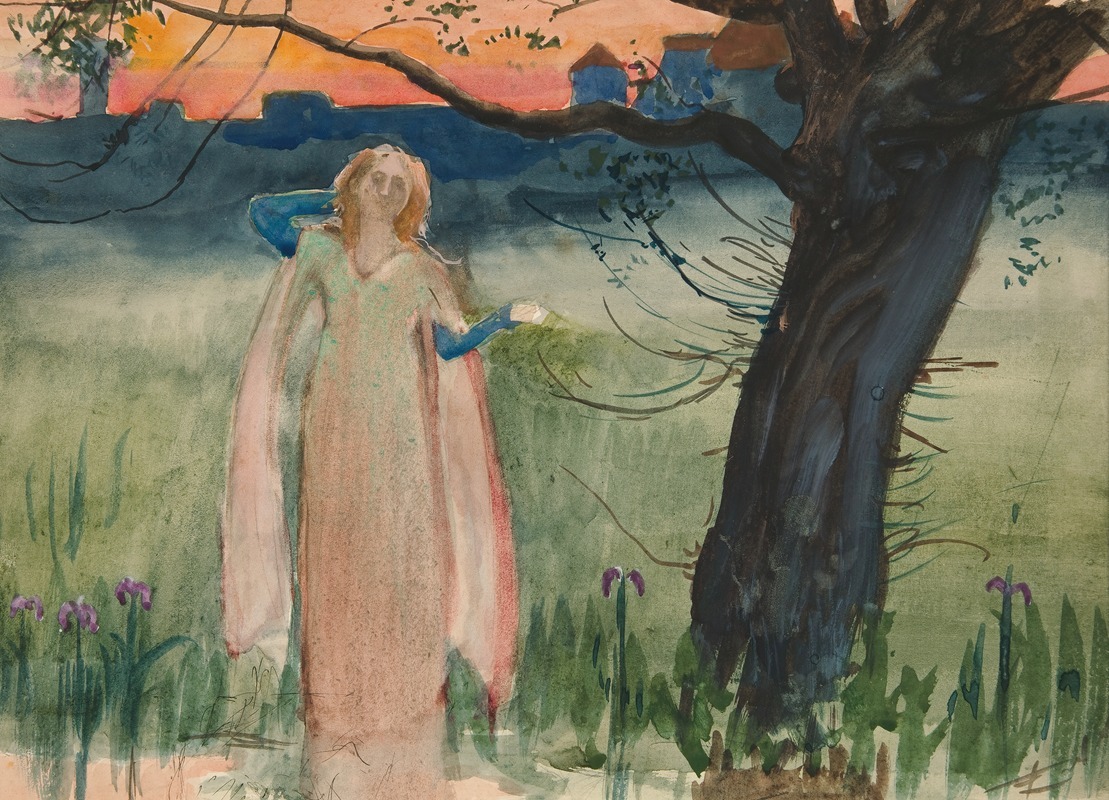
Ophelia by the brook – Act IV, Scene VII, Hamlet
A hand-painted replica of Edwin Austin Abbey’s masterpiece Ophelia by the brook – Act IV, Scene VII, Hamlet, meticulously crafted by professional artists to capture the true essence of the original. Each piece is created with museum-quality canvas and rare mineral pigments, carefully painted by experienced artists with delicate brushstrokes and rich, layered colors to perfectly recreate the texture of the original artwork. Unlike machine-printed reproductions, this hand-painted version brings the painting to life, infused with the artist’s emotions and skill in every stroke. Whether for personal collection or home decoration, it instantly elevates the artistic atmosphere of any space.
Edwin Austin Abbey's painting Ophelia by the Brook – Act IV, Scene VII, Hamlet is a notable work inspired by William Shakespeare's tragedy Hamlet. Created in 1894, the artwork depicts a pivotal moment from Act IV, Scene VII, where Ophelia, driven to madness by the death of her father Polonius and Hamlet's rejection, meets her tragic end by drowning in a brook. Abbey's interpretation captures the melancholic and poetic essence of Ophelia's demise, a subject that has fascinated artists and audiences for centuries.
Edwin Austin Abbey (1852–1911) was an American painter and illustrator known for his detailed and historically informed works, often inspired by literature and drama. Abbey spent much of his career in England, where he immersed himself in the study of Shakespearean themes. His works often reflect a deep understanding of the historical and cultural context of the plays he illustrated. Abbey's Ophelia by the Brook is one of his contributions to the visual representation of Shakespeare's characters, showcasing his ability to translate literary moments into evocative visual art.
The painting portrays Ophelia in a moment of vulnerability and despair, surrounded by a lush, natural setting. Abbey's attention to detail is evident in the intricate rendering of the foliage and the delicate textures of Ophelia's garments. The composition emphasizes her isolation and the inevitability of her fate, aligning with the tragic tone of the play. Abbey's use of color and light enhances the emotional impact of the scene, drawing the viewer into Ophelia's world.
This work is part of Abbey's broader engagement with Shakespearean subjects, which included illustrations and paintings based on other plays. Abbey's Shakespearean works were well-received during his lifetime and contributed to his reputation as a leading artist of his era. His ability to capture the emotional depth and complexity of Shakespeare's characters made his works popular among both art and literature enthusiasts.
Ophelia by the Brook reflects the late 19th-century fascination with Shakespeare and the Pre-Raphaelite-inspired aesthetic that emphasized naturalism and emotional expression. While Abbey's style is distinct, it shares some similarities with the works of artists like John Everett Millais, whose 1852 painting Ophelia is another iconic representation of the same scene.
Today, Abbey's Ophelia by the Brook is recognized as an important example of Shakespearean art from the late 19th century. The painting is held in a private collection, and its reproductions continue to be appreciated for their artistic and literary significance.







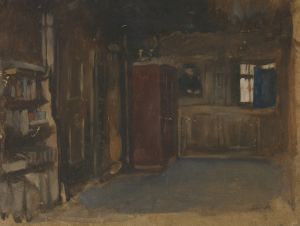
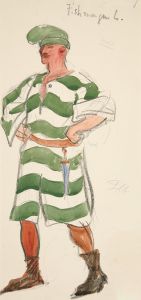
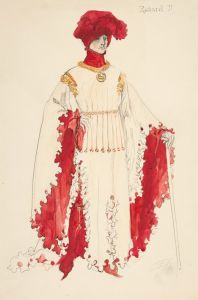

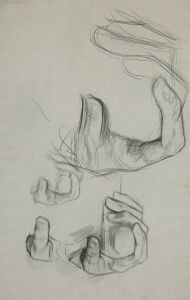


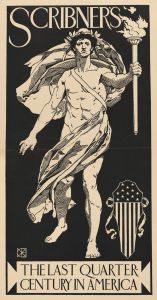
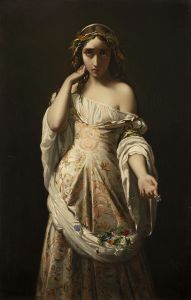
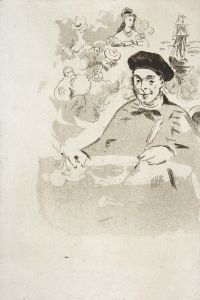

![Ophelia; from Rackham’s Illustrations to Lamb’s Tales from Shakespeare [Hamlet]](/imgs/268044/s/arthur-rackham-ophelia-from-rackhams-illustrations-to-lambs-tales-from-shakespeare-hamlet-79c3d3ec.jpg)